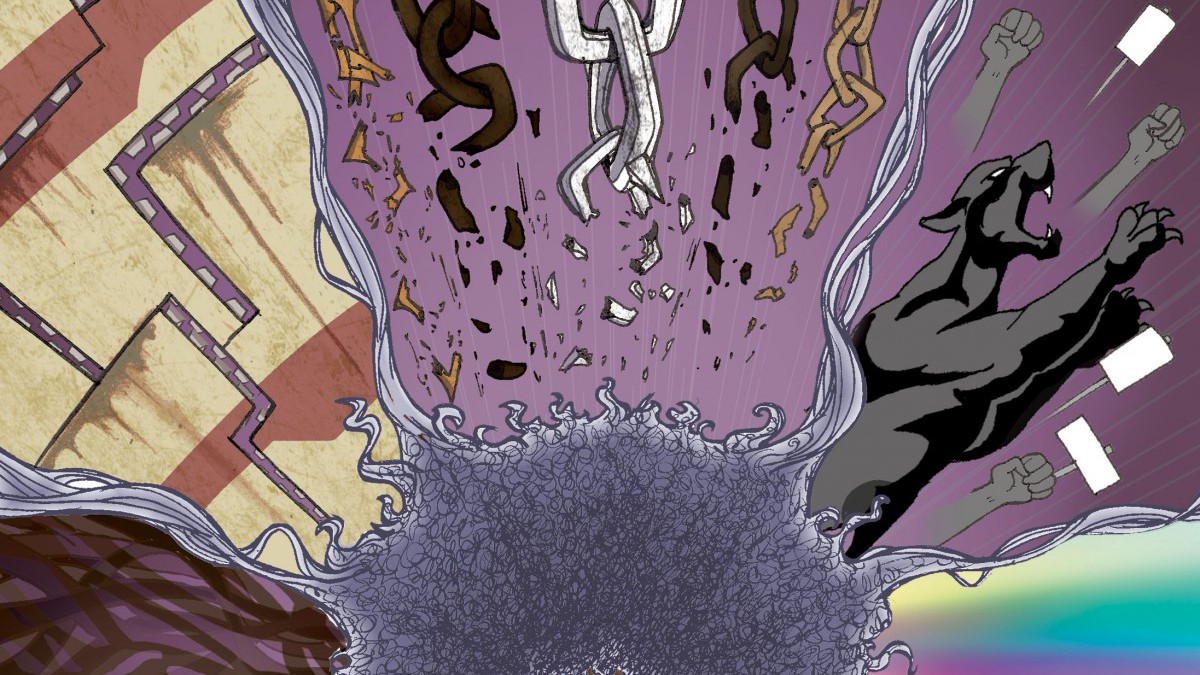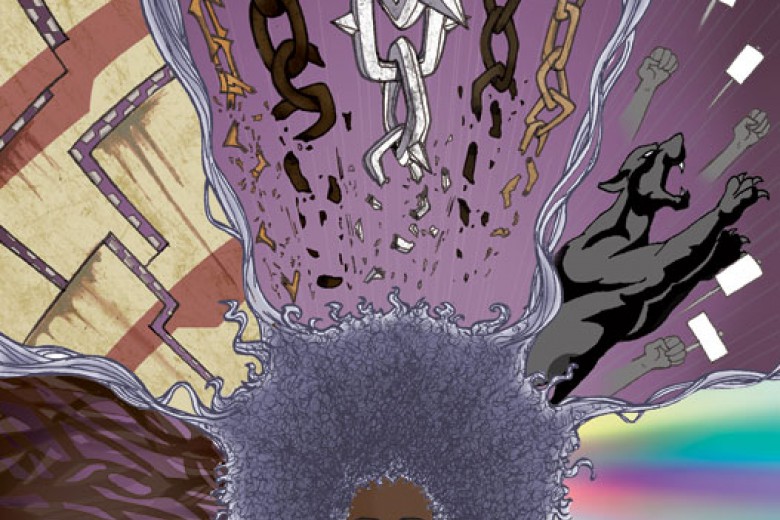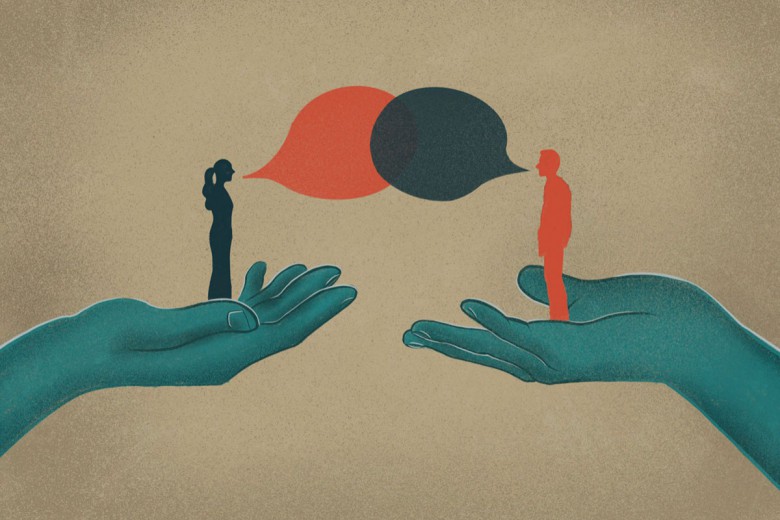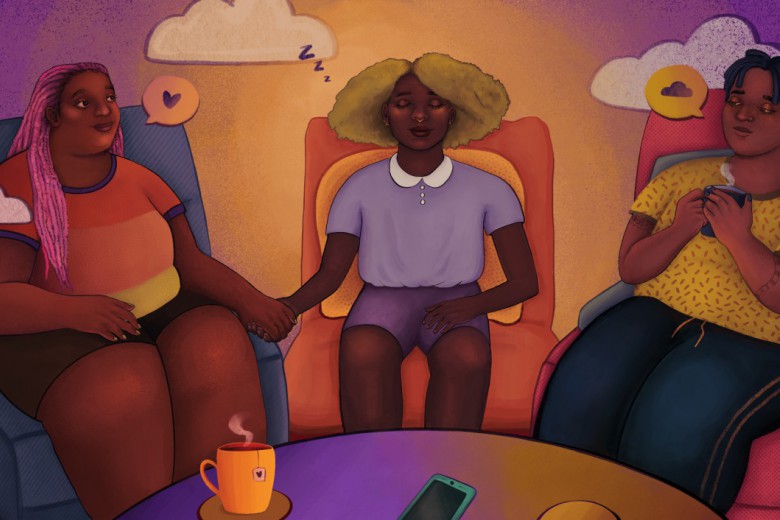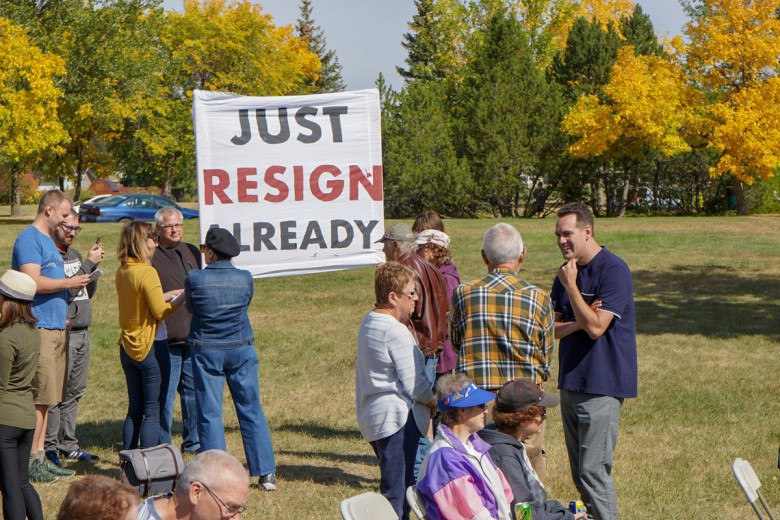Find Part 2 of “If Black Women Were Free” here.
Writing in her 1993 memoir A Taste of Power: A Black Woman’s Story, former Black Panther Party (BPP) chairperson Elaine Brown revealed that in her time as a leader in the party, women were perceived as an “enemy of the black people.” “Nobody said it,” wrote Brown, “but a Panther was a man.” Her political commitments situated her as “a comrade with pussy.” Not long after her memoir was published, Brown’s BPP co-activist, Angela Davis, disclosed that “many of our former comrades – women and men alike – are expressing disgust that [Brown] would ‘air so much dirty laundry’ after all these years.” But Davis, like Brown, also exposed the details of the misogyny embedded in the politics of Black nationalist organizing. No matter women’s position or contribution, Davis wrote, power “was sexualized so that women’s place was always defined as unalterably inferior.”
Without reducing the power and effect of the work of Black liberation, naming the endemic misogyny that pervaded Black liberation movements revealed, according to Davis, the “painful realities that were as much a part of the era as our idealism, our accomplishments and the heroes we accorded the status of myth.” Existing feminism provided little liberatory potential: “While many of us have detested the overt sexism of male leaders,” wrote Davis, “we tended to associate feminism with middle-class white women who could not understand our battles against racism. In failing to recognize the profoundly masculinist emphasis of our own struggles, we were all at risk.”
The work to name and transform gendered violence in radical movements did not begin in that moment, nor has it ended. Transformative justice (TJ) grew out of these histories of Black feminist organizing, and has become widely influential in Black communities and in wider left organizing spaces.
In contrast with more mainstream approaches like restorative justice, TJ is effective in contexts in which deep, structural change is the goal. There cannot, as many organizers have noted, be restorative justice when the systemic relationships to be “restored” are inherently oppressive.
TJ centres Black women’s experiences of violence while resisting the notion that speaking about violence detracts from organizing: men who cause harm can be understood simultaneously as effective or well-loved organizers and as perpetrators of misogynistic violence. In this sense, TJ is open-armed – naming violence committed while leaving room for those who have caused harm to be accountable and to come back into the fold.
In Detroit, Chicago, Philadelphia, the Bay Area, and Los Angeles, TJ has long been used as a way to respond to gendered violence and sexual assault without resorting to police and state interference. Organizing communities in Canada have a less-developed tradition of employing TJ practices, and yet the many instances of gendered violence that disrupt our organizing communities suggest that we urgently need these methods. TJ helps to create resilient social movements that are able to withstand state pressures, and that are also accountable for the historical and ongoing harm committed against Black women within these spaces.
The dialogue below is intended to serve a dual purpose: part one offers support for Black communities and other organizing communities more broadly to improve tactics and effectiveness when using TJ practices to heal from violence. Part two, which will appear online in September, explores these histories in more depth, and highlights how white-dominant organizing communities can respectfully learn from and employ TJ principles in ways that are accountable to the Black feminist traditions from which TJ arose.
Rachel Zellars and Naava Smolash developed this conversation over several months, sitting together first in Rachel’s critical race feminism course at McGill University, then over fruit and wine in Rachel’s kitchen.
NS: What is transformative justice and where did it arise?
RZ: It grew, most simply, out of the erasure of gendered violence in Black communities and because of a traditional and well-informed mistrust of the police. If you can’t call the police to handle violence in your home, that does not erase the incidence of violence itself. You are still left with the great dilemma of how to create accountability and healing at the community level and within your home. Black women in many U.S. cities have long understood this challenge because of the need to survive in a world in which you want your partner or someone in your community to stop harming you, but you do not want them incarcerated or dead.
TJ grew alongside the prison industrial complex, as Black women who organized around gendered violence also quickly understood that the work must simultaneously entail looking at mass incarceration. It arose out of the erasure of violence against Black women, whose voices were often silenced, or who felt they needed to silence themselves, so as not to “derail the movement” by naming violence they were experiencing at the hands of Black men who were their comrades, fathers, brothers, partners.
NS: You’ve said that TJ begins at home. How do you practice TJ in your life and organizing work?
RZ: My own pathway to transformative justice begins with my motherhood, and the quick realization you have as a Black mother in knowing that you ultimately can’t control [your children’s] bodies in or out of your home through physical violence. The act of Black motherhood is always, in some real way, preparation for quite possibly losing your child.
A lifelong friend and I were talking about this not long ago. He came from a home where whuppings were very normal. Regarding his own son, he said, “If the best I have is violence to control my son, then that is not very much at all.” I really get that. The profound limitation of violence was a very painful realization for me, because it happened in the context of barely having enough, being in this country with no family, coping with an unemployed ex with increasing mental health issues, and facing down my own childhood demons. In other words, it was not at all instinctive for me at this period in my life to not wage violence in some fashion in my home as a single mom.
The ideas that started shaping in my own home with my babies were first about how I was going to exercise discipline as a single mother parenting under an intense set of conditions, when I still needed stability in my home. I needed a way of mothering that was different from screaming at my children in their most intense moments. And then, how can I raise my children to be free human beings in a world already so ordered against their very existence? This is the most important question guiding my parenting, still.
Now, a few years later, it seems like the perfect pathway because transformative justice, as I see it, always begins at the smallest and closest locale. TJ is not just about advocating for alternative models for conflict resolution and accountability in communities and institutions. It is foundationally about what we do in our interpersonal relationships, [with] those we’re closest to, those we are tethered to. Sometimes in ways that we desperately do not want to be.
NS: You co-founded the Third Eye Collective [a TJ-focused collective of survivors who support Black women experiencing gender and partnership-based violence] a few years ago with a small group of women in Montreal to address the absence of spaces that specifically supported Black women. How does the Third Eye Collective understand this relationship between organizing and intimate space?
RZ: When we began, before I made the full commitment to the collective, I said, “Look, we are going to be deeply implicated in each other’s lives, holding one another in work that puts us at tremendous risk, being in and out of one another’s homes.” The bedrock of Third Eye’s work became “no disjuncture”: no disjuncture between the personal and the political. I don’t need to be in your bedroom, but I needed us all to be really clear about what kind of integrity we wanted to work for in our intimacies and bedroom spaces, in our kitchen spaces, in our organizing spaces, because we all know that the disjointed relationship between the public and private is what consistently upends organizations.
NS: Talk to me about the practical ways that TJ can take place in Black communities. What do people need to know and do to practise TJ when facing gendered violence?
RZ: Okay, before I can respond to that, I want to talk about the groundwork that needs to first be paved.
First, we have to believe people who share that they have been harmed. In the context of gendered violence, Black women are unlikely to speak, and history has shown us repeatedly that the costs of speaking are tremendous. Hannah Brown was labelled a whore in Windsor when she dared to accuse her assailant, Jonathan George, of rape. Celia, an enslaved woman, was executed for beating her rapist to death with a stick. Elaine Brown was publicly called a ho by every prominent member of the [BPP] after she published her memoirs detailing her abuse at the hands of Panther men in 1993. These are iconic historical examples, but there are thousands of others. Black scholars such as Beth Richie and Barrington Walker have done a tremendous job illustrating Black women’s realities of not being believed in courts and in our communities when we dare to open our mouths and tell our stories. This is why Maria Altagracia Dorval, a Black woman in Montreal who was murdered by her ex six days after asking for help, is dead.
So, the first thing we need to do is nurture communities that encourage Black women to speak up and that know what to do with our stories. We need Black men to be open, fearless, and honest in supporting the accountability work we are doing. We need men to prioritize conversations with younger Black men about rape, incest, violence, and neglect, both in personal and community conversations. Uchenna Edeh, for example, is doing beautiful, important work to nurture this kind of community in Montreal through his men’s group at DESTA, a youth-led organization in Little Burgundy. We need so much more of that. We also need our aunties and mothers and grandmothers and cousins to talk to us about the impacts of intergenerational trauma, about incest and sexual violence. Kiese Laymon has been sharing his ongoing conversations with his grandmother about these questions for the last few years. His words have opened me up even more. I want to say that that is the work.
Finally, as Black peoples, we need to reckon with our radical histories and intellectual traditions so ripe with gendered violence. Because Black nationalist traditions are so essential to our wellness and so implicated in our survivals in a world that would rather wipe us out, we need to radically reframe these traditions so that the stories of gendered violence woven through them finally rise to the very top. In my course, I work to centre violence against Black women within traditions of Black nationalism, so that those histories of violence also become a fundamental syntax within the organizing and intellectual politics of Black radical traditions. What would it mean to imagine Black freedom as inherently tied to both of these things?
NS: How does accountability work in practice, in ideal TJ, and what is ideal TJ?
RZ: Accountability work with someone who has committed harm often entails inviting an aggressor to the table to engage in ongoing work, such as clear relationship boundaries, therapy, and signalling, via terms set by those whom the person has harmed.
NS: You can ask elders or friends respected by all to play a role, telling the perpetrator what they need to see, calling for them to come back into the fold and be accountable for harm they have caused.
RZ: Yes. However, I have started to think of this as “ideal accountability work,” because we don’t get here very often. More often, stories trickle into our collective, and women who have been harmed reach out for psychic and emotional support from us. We send over delicious meals, we talk on the phone a lot, we text, we support women who just want to get through their semester without failing, we reach out to other community members for advice, and that is also the work. We meet for coffees. We drink a lot of coffee.
NS: So, it sounds like “ideal TJ” is not just about the moment of asking a perpetrator to the table, but it is in all of the nurturance that happens before and around the relationships that make that possible, or that hold people when it is not yet possible. TJ can be formal process, but it is also relationship building, and nets of care.
RZ: Yes. And it is also harm reduction. Which may mean supporting parents who may themselves never have experienced safety. Look, if you have never experienced secure attachment to a parent as a child, how would you know how to create and nurture attachment bonds with your own children – or with your lover or partner, for that matter? How would you even dream it?
So harm reduction in the context of transformative justice is this mother who has herself experienced so much violence in her own childhood, calling me when she is about to beat her son when he is acting out, and me saying, “No, please don’t hit him. Please don’t hit him with an object. No, you cannot hit him in the face.” Harm reduction work means you make a conscious decision to have a relationship that is difficult, and to be present with all the grey in spaces with ongoing violence in order to reduce harm in proportion – bit by bit. You make a decision not to run from that. And most people who live with personal histories of violence, I think, yearn to run or ultimately do turn their backs here because the aching, the despair that comes with this kind of work is too much for most humans to bear.
But harm reduction is absolutely essential for TJ work with those in our communities who are living under very, very difficult conditions that are multi-dimensional, intersecting, and systemic – in other words, not easily “fixable.” Robyn Maynard, who has done this work for the last decade in Montreal, has felt like a lifeline on the phone with me at times. We need more Black women like Robyn to keep creating buffers of love so that we can all hold a little bit more of this work.
For an extended dialogue between Naava and Rachel, including a conversation about the history of TJ, the work of the Third Eye Collective, and guidance for wider use of TJ in organizing spaces, read Part 2 of “If Black Women Were Free” here.


